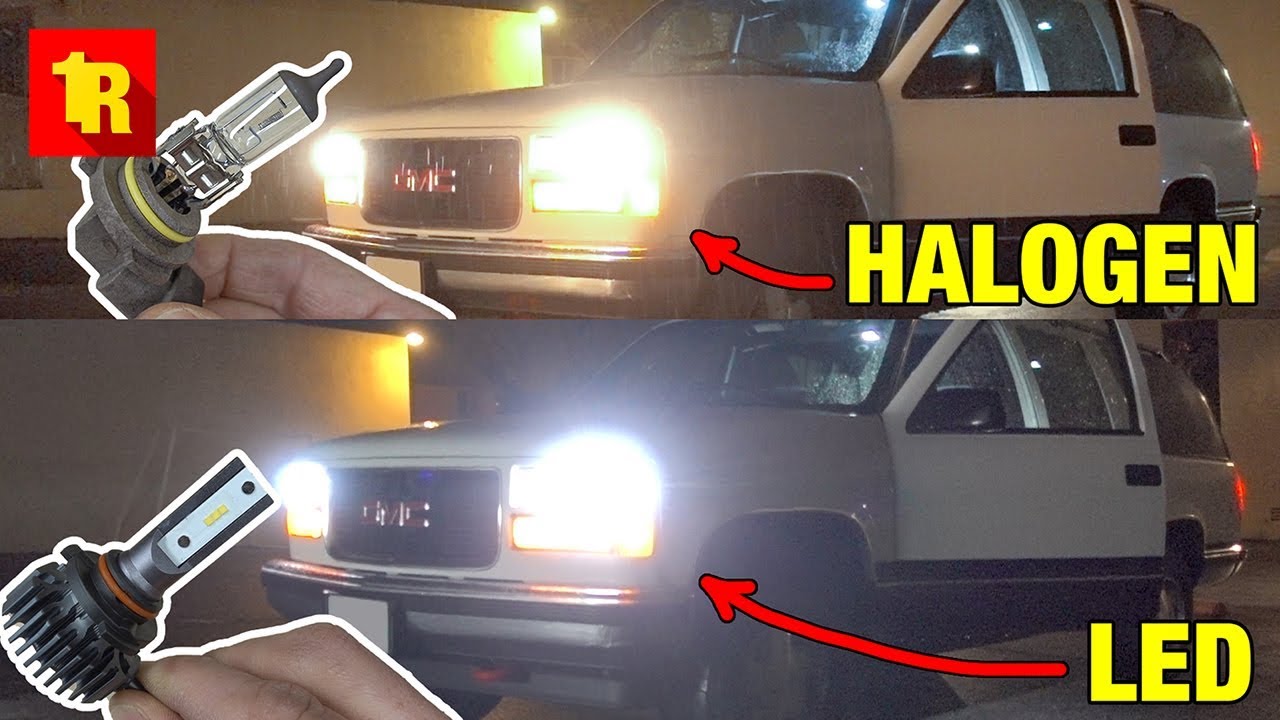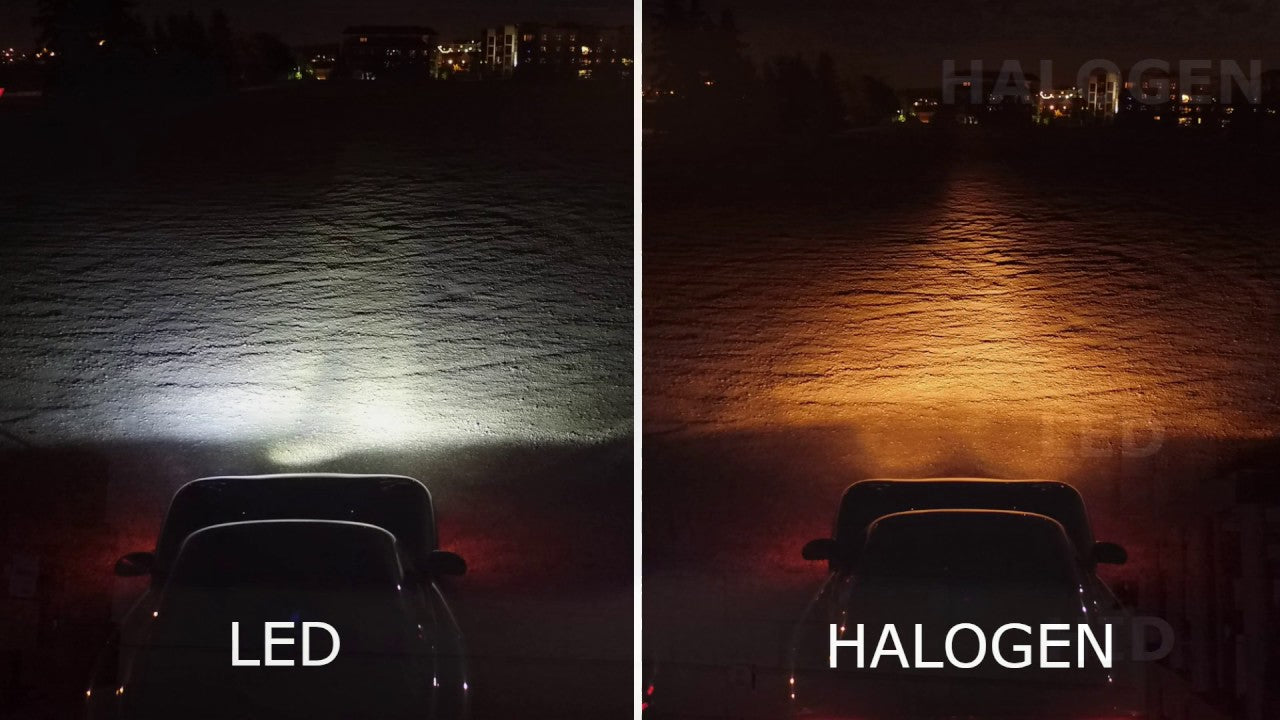Do you have trouble driving at night because the headlights are about as bright as an old flashlight? It might be time to get rid of the factory bulbs and upgrade to the latest tech. Read this brief guide to learn all about upgrading your existing headlights to a better option:
Should You Actually Replace Headlights?
It’s worth asking yourself why you want to replace the headlights. Do you want better visibility at night? Or have the existing lights actually blown out? Headlights do require routine replacement. But you should only replace them for the right reasons.
If your car’s headlights have dimmed, don’t go rushing to replace the bulbs. The lens cover might be to blame. Sunlight damage could cause discoloration in the lens covers. They might become yellowish or cloudy. In case this is the problem with your vehicle, you need to replace the lens covers, not the bulbs.
It's highly recommended that you refer to your car’s user manual. It should have a section on headlight care. The manual may mention how often you need to replace the headlights, and when.
Replacing Vs. Upgrading
Replacing the headlights and upgrading them are slightly different. You can replace the existing headlights with newer ones of the same kind. But upgrading headlights can give you better visibility on the road.
Most older car models have halogen headlights. These bulbs give out a yellowish light. Some drivers may find the yellowish brightness inadequate at night. Instead of replacing halogen bulbs with the same type, you can upgrade to newer LED lights. LED and HID bulbs give off cooler lights that help drivers see farther than halogen bulbs.
You can find headlight upgrades matching halogen capsules for older vehicles. That is to say, you buy brighter LED or HID headlights with the same type of capsules already in your car. You can conveniently install these upgrades without having to replace the capsules as well.
Important Features to Consider
There are three important factors to consider when choosing new headlights:
- Compatibility
- Brightness
- Beam strength
Obviously, the headlights you choose must fit in with your car’s model. Look up compatible headlights in the vehicle user’s manual. You can also ask the product manufacturer whether a certain type of headlight is suited for the vehicle you own.
Next comes brightness. The brightness of bulbs is calculated by lumens. The higher the lumen number, the brighter the headlight bulb. As mentioned above, some types of headlights offer higher levels of brightness. Newer headlights definitely offer more brightness.
In addition to brightness, drivers should consider the beam strength. Technically, the beam is the size and pattern of the light the bulbs project in darkness. The beam is the result of light travelling through the lens and reflector in the bulb. In some headlights, the beam is created by a projector, rather than a reflector.
Ideally, the beam pattern created by a headlight should be sharp. It should illuminate the road ahead with clarity. You can’t expect optimal visibility with a fuzzy beam.
The right beam pattern is important for illuminating the parts of the road you need to see. The wrong beam may obscure visibility, and might even blind oncoming motorists.
It’s important not to confuse beam strength and pattern with brightness. A brighter headlight doesn’t necessarily generate a sharp beam. Installing brighter lights doesn’t eliminate the fuzziness of a beam either.
Most headlights advertise the beam pattern the bulb generates. Pay attention to this factor. A highly compatible headlight would generate the type of beam you want.

Types of Headlights Available for Modern Cars
Headlights are classified according to the type of technology they utilize. There are three commonly used types of headlights:
- Halogen
- LED (Light Emitting Diodes)
- HID (High-Intensity Discharge)
Halogen headlights were once the standard fare in cars until LEDs became popular. Older cars have these bulbs made from a tungsten and halogen mixture. Halogen bulbs have a warm color temperature, so they are not as bright as newer upgrades.
You may already have heard of LED bulbs. These bulbs are common in household use. LED bulbs are available for headlights as well. These bulbs are comparatively energy-efficient and more incandescent than halogens.
HID lights are very bright and highly durable. Compared to halogens and LEDs, HID bulbs operate on lower temperatures. They offer great benefits in terms of brightness. However, installing HID bulbs is quite complicated. HID bulbs are also expensive.
Consider replacing your old headlights by upgrading to LED or HID bulbs. Choose halogens only if absolutely necessary.
LED bulbs are bright and eco-friendly. HID bulbs are extremely bright and durable. Halogens are suitable for people on a tight budget. Night drivers with some cash to spare should consider HIDs.
Why You Should Care about Color Temperature
Everyone talks about brightness when it comes to headlights. There’s another important aspect to consider: the color temperature.
Color temperature has nothing to do with heat, of course. It a simple reference to the color of the light. A warm headlight emits a yellowish glow. Halogen lights are known for this.
A cooler headlight emits a bright, white light, like LEDs. HIDs are even cooler than LEDs. The light from HID Xenon bulbs is bluish white. It looks great and offers excellent visibility at night.
Generally speaking, cooler lights offer better visibility at night. Warmer lights like halogens aren’t as effective. However, the right color temperature need not always be cool. Choose the headlight glow based on your needs and the road rules in your area.
Do You Need Fog Lights?
Fog lights are specifically designed to facilitate driving in foggy conditions. Since fog tends to reflect headlight beams right into the driver’s eyes, fog lights prevent this type of glare.
Fog lights are only necessary if you drive in foggy conditions frequently. You might want to consider fog lights if you live in a mountainous, misty area. Or else fog lights won’t be of much use to you.
In Summary
Now that you have a basic understanding of car headlights and features, you can get down to choosing the type you want.
When purchasing headlight upgrades, pay equal attention to brightness and beam strength. A bright headlight can only illuminate the road well if the beam is in the right place. Read the specifications for bulb products carefully to figure out both.
Don’t focus only on the level of brightness. The color temperature also plays a role in visibility. It’s not as important as the beam but is worth considering. The right color temperature of headlights determines how comfortable the drive would be.
The compatibility is equally important. If the bulb fits into the existing capsule in your vehicle, then you would be set. You only need to unscrew the old one and screw in the new bulb.
If the capsules don’t match, the installation will be difficult. You might even need professional help. HID bulbs, for example, have different capsules that require installation by a mechanic.
When you replace the headlights, remember to replace all bulbs in the vehicle. Avoid mixing up old and new headlight bulbs, or LED and halogen bulbs. Doing so would result in an uneven beam and partial illumination. If your vehicle uses multiple separate headlights, you must replace them all at once.
Lastly, consider the price. Set a budget in advance to prevent overspending. Your budget would largely depend on the type of headlight you choose. HID headlights are the most expensive. If you want to upgrade to a cooler light, LED would do. LEDs are nearly as bright as HIDs, but only at a fraction of the cost.
Ultimately, base your purchasing decision on the headlight features you want. Then choose the bulbs that match your budget.




